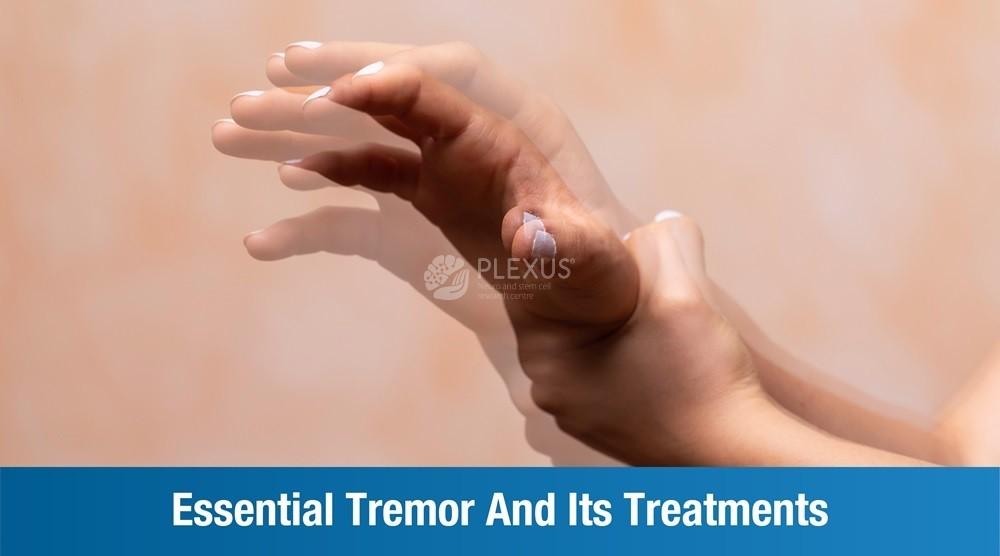
Tremors are rhythmic and involuntary movements of a part of the body. The most common triggers of tremors include neurological conditions, cerebellar disorders, metabolic disorders, stroke, side-effects of certain medications, alcohol withdrawal, and stress. This blog focuses on the clinical nuances of tremors with particular emphasis on neurological disorders, Essential Tremor and Parkinson’s disease, the two prominent contributors of tremors.
Let’s explore the differences between Essential Tremor and Parkinson’s Tremor, while also understanding their symptoms, causes, and other critical features that help in arriving at an accurate analysis and effective management.
Understanding Essential Tremor
Essential Tremor (ET) is a neurological disorder that is characterized by involuntary and rhythmic shaking of certain body parts. ET mostly manifests in the hands, head, and voice. It is often progressive and can impact daily activities, affecting quality of life. Although ET is not associated with other neurological symptoms (dementia, for example), it can be functionally disabling, without leading to cognitive impairment.
Essential Tremor Symptoms
Often referred to as “benign”, ET predominantly manifests as rhythmic shaking, typically affecting the hands. Some individuals can experience a tremor in the head. This is often mistaken for a nodding and shaking motion.
Other aspects that ET can affect include posture and voice.
Stress can exacerbate the symptoms of ET. although it can extend to other parts of the body. The tremors are often noticeable during purposeful movements and may worsen with stress, fatigue, or certain postures.
Essential Tremor Causes
It may be difficult to pinpoint an exact cause of ET. However, studies have shown ET may be triggered by a combination of the following:
- Family history
- Brain abnormalities (especially in the cerebellum, thalamus, and/or other motor control regions)
- Environmental factors (caffeine, smoking, emotional stress, fatigue)
- Side-effects of certain medications
- Age
- Neurotransmitter imbalance (especially gamma-aminobutyric acid, GABA, which regulates nerve impulses)
What is Parkinson’s Disease Tremor?
Parkinson’s disease is a progressive, chronic, and degenerative brain disorder that impairs muscle control, balance, and movement. It results in the deterioration of the cells in substantia nigra (in the basal ganglia). It disrupts the brain’s ability to produce dopamine, the happy hormone. As the disease progresses, the neurons in the brain completely deteriorate.
In its advanced stages, Parkinson’s can lead to severe motor impairment, tremor, stiffness, slowed or delayed movement, dysphagia, sleep issues, fatigue, difficulty in speech, etc.
Parkinson’s Tremor is a distinct type of tremor, and is often referred to as resting tremor.
Unlike Essential Tremor, the tremors associated with Parkinson’s are more pronounced at rest and tend to diminish during purposeful movements.
Essential Tremor vs. Parkinson’s Tremor
The primary difference between Essential Tremor and Parkinson’s Tremor (PT) is the nature of the tremor. While ETis primarily seen during action, PT is most evident when the affected limb is at rest. It is this difference that will help your doctor arrive at a conclusive diagnosis.
Individuals with ET can typically maintain a normal posture and have preserved balance. However, PT is often accompanied by other symptoms of Parkinson’s disease that include postural instability and a distinctive shuffling gait.
Diagnosing Tremor
The following steps may be followed by your doctor to arrive at a diagnosis.
Clinical Evaluation
Your doctor may assess patient history, family history, as well as conduct a detailed examination of tremor characteristics.
Neuroimaging
Typically an MRI (magnetic resonance imaging) or DaTscan can help to rule out other potential causes and provide additional insights into the underlying pathology. MRIs can help identify any lesions or abnormalities in the brain. DaTscan checks for any loss of dopaminergic neurons in the striatum, which is in the basal ganglia.
Managing Tremor
Managing ET
This involves a combination of lifestyle modifications and medications. Beta-blockers and anticonvulsant drugs are most commonly prescribed to help alleviate symptoms and improve quality of life.
Managing Parkinson’s
This involves a broader spectrum of interventions. At our centers in Bangalore and Hyderabad, we offer holistic and customized rehabilitation programs for Parkinson’s comprising:
- Stem cell therapy
- Occupational therapy
- Physical therapy
- Speech and language therapy
- Cognitive rehabilitation therapy
- Bradykinesia management
- Rigidity management
- Agility training
- Functional training
- Hand function training and more
Living with Tremors
Both Essential Tremor and Parkinson’s Tremor have numerous psychosocial implications. Since both types of tremors are visible, it can make the patient feel extremely self-conscious, and even impact everyday functionality.
Adaptive devices, occupational therapy, and participation in support groups are considered great coping strategies. However, a great component of coping with tremor is the patient’s social environment. Having family, friends, and co-workers who are supportive and understanding can go a long way in helping these patients come to terms with their diagnosis, and navigate the many challenges that accompany tremor disorders.
At Plexus, we offer a wide range of therapies and rehabilitation programs for both Parkinson’s and Essential Tremor.
If you wish to know more about these, please do not hesitate to reach out to our team in Bangalore and/or Hyderabad.
WhatsApp +91 89048 42087
Call +91 78159 64668 (Hyderabad) | +91 82299 99888 (Bangalore)
FAQs
Can Essential Tremor turn into Parkinson’s?
No. Although Essential Tremor and Parkinson’s Tremor share some similarities, having ET does not necessarily mean the patient will eventually have Parkinson’s too.
What stage of Parkinson’s is tremors?
Tremor is the earliest and most common symptom of Parkinson’s.
Is Essential Tremor slower than Parkinson’s Tremor?
Studies have shown ET to have a faster frequency than PT. This could be because ET occurs during certain movements or positions, when the body is in motion/action. However, PT is more prominent at rest.
What exercises are good for Essential Tremors?
Exercises that focus on balance, coordination, and strength training, such as yoga, swimming, aerobics, etc. can help patients with ET.
What is the best vitamin for tremors?
Although there is no conclusive proof, research indicates that vitamin B12 plays a role in maintaining neurological health and function. Please consult your doctor before taking any supplements.










